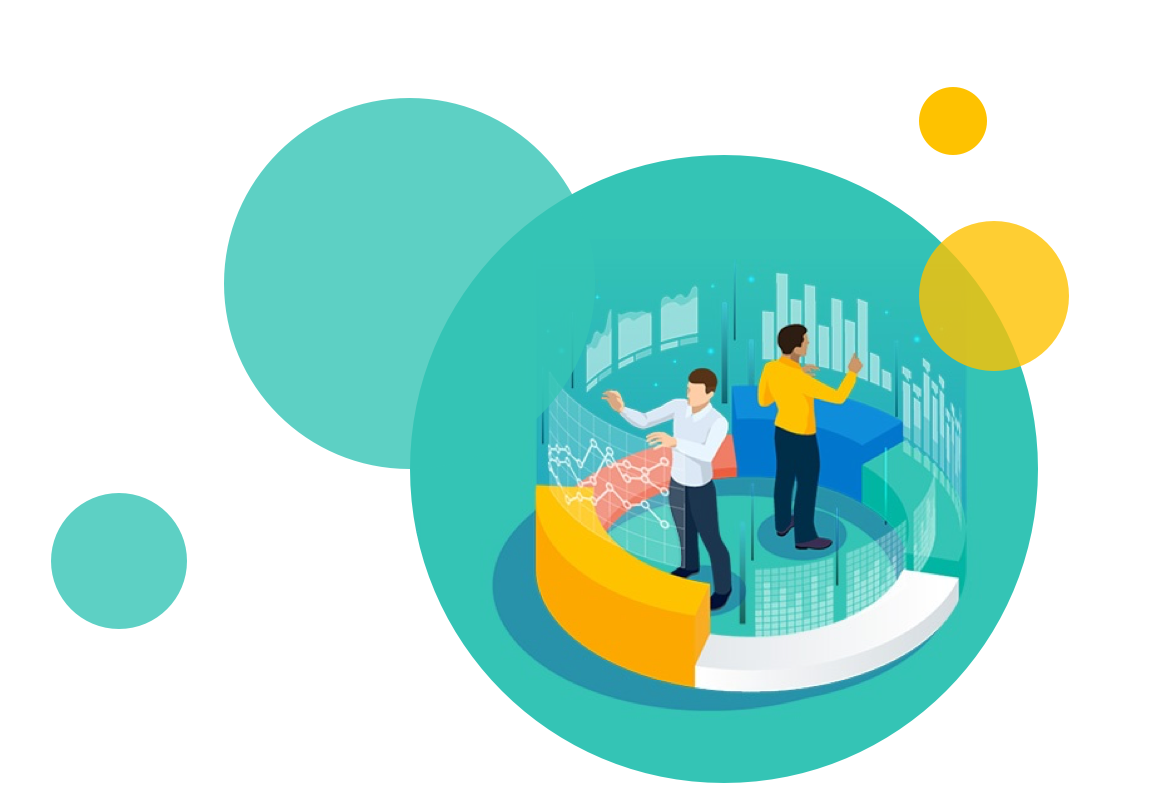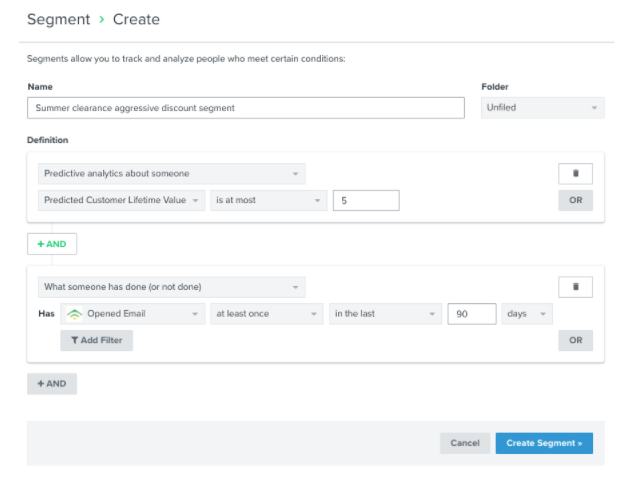How Segmentation Adds Value to Your Business
As a marketer, you spend time creating articles, ads, videos, or emails trying to communicate and persuade your visitors to make conversions like purchases, subscriptions, or tweets.
But conversions like these rarely happen if the content created doesn’t appeal to the audience it’s designed for.
Segmentation permits you to divide your audience into identifiable groups and send targeted and more personalized content that better suits your target audience depending on their age, location, device, or interests.
In today’s marketing environment, not knowing who you are talking to or trying to reach is taking a risk to let your message fall on deaf ears and generate no conversions.
Segmentation can help you create messages tailored to a specific audience for better conversions. An excellent example of this in practice are retargeting ads and cart abandonment emails for customers who didn’t complete their checkouts.
Such campaigns usually have high conversions because they target a specific group of their audience who might be most interested in checkout incentives like discounts.
In this article, we’re going to look at what segmentation is and how it can add value to your business if implemented well.
What is segmentation
We define segmentation as a process of separating your audience into different groups based on their attributes like interests, geographic location, age, etc., to send targeted communications that generate conversions.
No matter how specific your product, service, or customer profile is, there are always different people in your audience. The key to converting more of them into customers lies in understanding which groups are interested in your business and how you can best reach them.
Dividing your audience will allow you to create more targeted messages for every audience group for better conversions.
Segmentation is crucial right now because today’s customers are regularly subjected to a lot of content from different brands that your message needs to be personalized if they are going to convert.
People want to be approached in a way that shows you actually know something about them. In fact, a recent study revealed that 72% of customers only engage with personalized messaging.
Segmentation allows you to create different audience groups so that you can deliver personalized and targeted messages to people based on their attributes.
You can segment based on common audience attributes like:
Geographic data - location
Demographic data - sex, age
Psychographic data - interests
Transactional data - LTV, CAC, AOV, purchase frequency
Behavioral data - Page visits, form submission
Dividing your audience based on these attributes helps you create more targeted campaigns that can address the needs of a specific group of your audience you are trying to reach and maybe convert them into customers with targeted campaigns.
For example, Loft used this Ad to attract more customers, specifically teachers.
Such an Ad communicates directly to a specific group of potential customers, teachers and probably has a higher teacher conversion rate than Ads that don’t specify who they are for.
The point is, there’s a high chance that a marketing message or strategy that works for one group may not work for another one.
Segmentation allows you to create different groups of customers for whom you can create targeted campaigns and generate better conversions.
A business can use segmentation in so many ways, but some of the most direct applications include:
Creating better content
One way segmentation can be applied in today’s marketing environment is content creation.
There’s so much content created today that you don’t stand a chance if your content doesn’t stand out and the best way to do this is by creating content that’s relevant to a specific group of people.
Here’s how:
Every business has different potential buyers. It doesn’t matter whether you're an eCommerce store selling one product or offering a single service.
There will always be different groups of people interested in your product and when you can identify these different groups.
Before you create content, ask yourself three questions, who is this content for, why should they care about it, and what value can they get from it?
The who, you can answer with customer data in analytics tools like Google Analytics or Ad platforms like Facebook Audiences.
This is basically demographic and psychographic data about your audience to help define the target age, sex, education, employment, and interests. This data helps define who you should create content.
After you’ve defined the target audience, then you can work on why they should care about your content and deliver value from it.
A good example is a cart abandonment email sent to people who didn’t complete their purchase
Why? Because these are people probably most interested in buying and value delivered is the discount offer. Here is an example from Jack Will.
2. Increasing revenue
Segmentation is about slicing and dicing your customer data in any way possible.
With transaction data like the number of purchases, average order value, and customer lifetime value, we can group customers based on how much revenue they generate or their cost of acquisition.
This can help you refine your marketing strategy and increase your revenue in two ways:
Identify the best acquisition channels.
Marketing is about testing to identify what works and what doesn’t so as to focus our limited resources on strategies with the highest returns.
Segmenting your customer base by acquisition channels shows you where most of your revenue is coming from and where you should focus in order to generate more returns.
One of the easiest ways is by grouping your customers based on their acquisition channels.
Here’s how you can do this in Google Analytics:
This shows you which channel is generating the highest revenue and which channel is wasting your resources.
With this information, you can increase your revenue by prioritizing your resources on channels that are already driving more revenue and reduce spend on channels that are not performing.
Another way segmentation can help you improve your marketing is,
Identify the best customers.
Who is your best customer?
In eCommerce, the best customers are usually the ones with the highest lifetime value (revenue generated within the time they are customers ).
If you can identify who these customers are, then you can focus on attracting more of them and increase revenue generated per customer.
This can be done in Klaviyo. By grouping your customer based on lifetime value, you can identify a customer segment with the highest LTV (highest value to your business).
This segment can then be used to create lookalike audiences to attract more customers similar to your high-value customer, who will, in turn, speed more on your business.
Focusing your marketing resources on channels that drive the most revenue and targeting an audience with a high LTV is one way of increasing revenue as well as reducing resource wastage on channels and customer groups that don’t convert.
3. Reducing customer loss
Every business should prevent customer loss because it costs a lot more to acquire a customer than to lose one.
Customers leave a business for a variety of reasons, but one sure way of reducing the loss requires customer data segmentation.
Here’s how
In eCommerce, defining customer loss is tricky because there’s no specific action a customer will take to definitively show churn. They simply just stop buying.
Before you can start reducing customer loss, you have to define who a lost customer is by looking at the number of days since their last purchase.
First, you need to determine your threshold; that’s the maximum number of days a customer is expected to make a repeat purchase. If that number is exceeded, that customer is considered churned.
You can use Klaviyo for this:
So, If your threshold is 100 days, then every customer who has not purchased something from your store in the last 100 days should be considered churned.
With segmentation, you can improve retention by identifying all customers at risk of churn and putting them through a retention campaign designed to get them back.
So with our 100-day threshold, all customers who have not bought in the last 70 days can be placed in a recovery campaign with an offer to prevent them from churning.
Conclusion
There’s no one size fit for all your customers, so why create solutions, content, or emails for all kinds of customers attracted to your business.
Take time to analyze your customer data, look at where they are coming from, the pages they visit, and purchasing habits to separate them into groups, and then cater to the needs of those different groups with content that’s relevant to them.
The objective is to create content that resonates with a specific group of people in order to get their attention, convert more buyers, retain more customers, and grow your revenue.
This is for readers who want to know more about how you can use segmentation to grow your business or want to solve any analytics challenge.
Book a free consultation call with our team of analytics experts for more personalized analytics help today.






